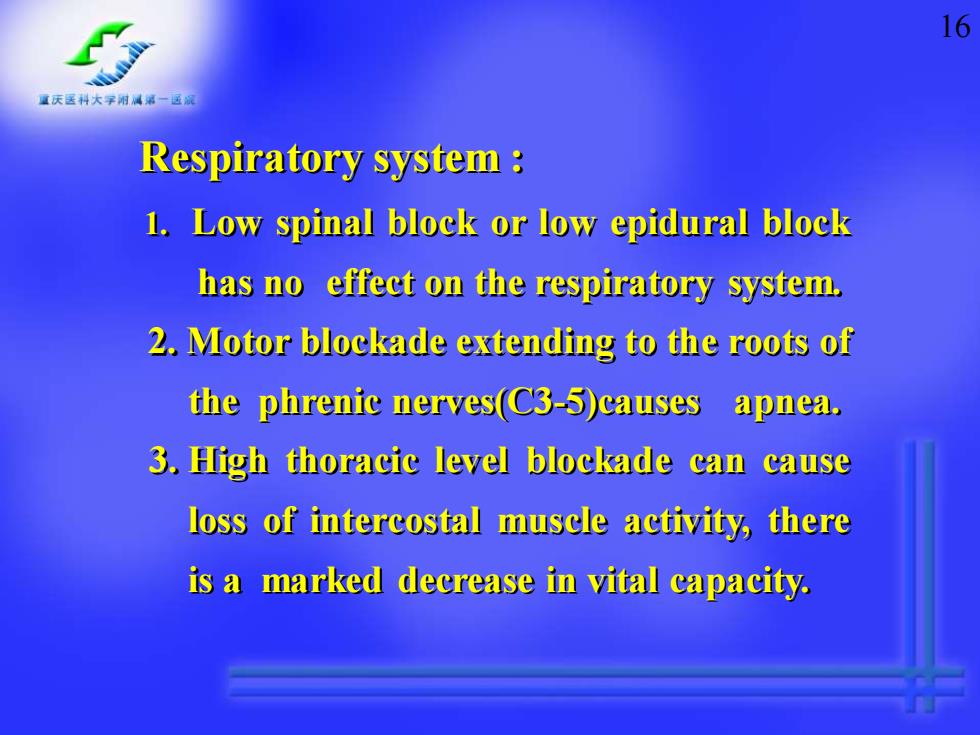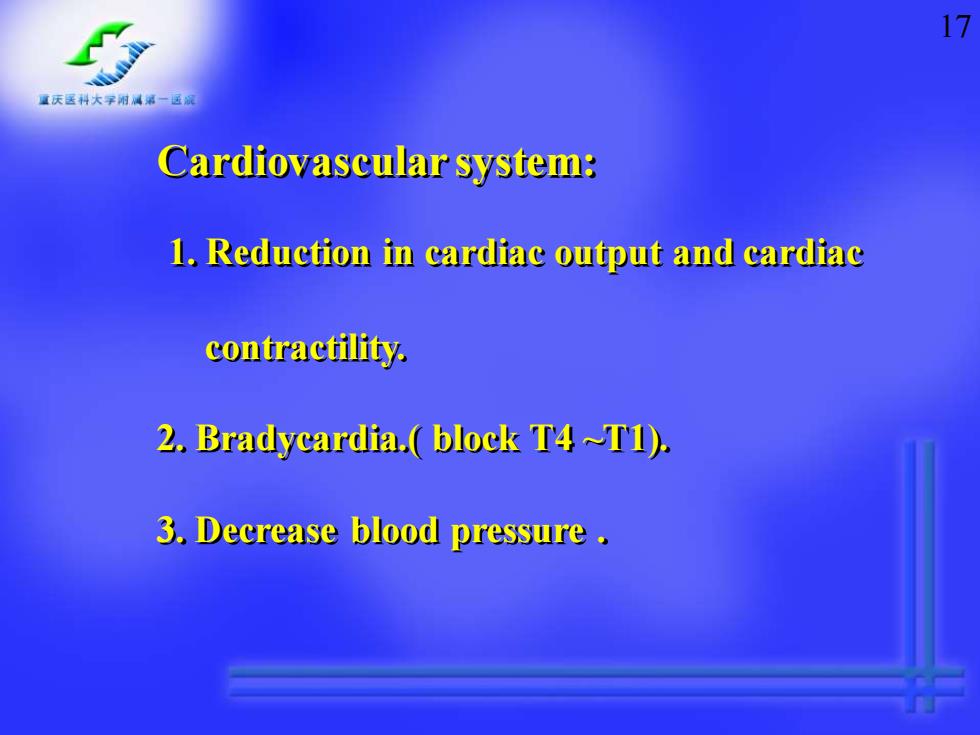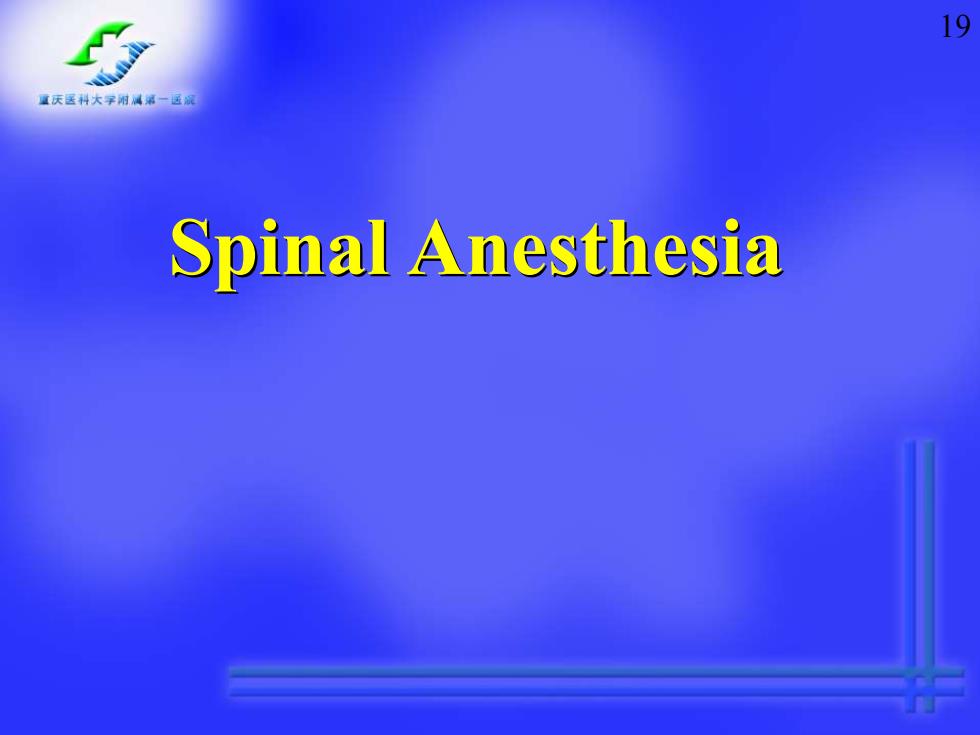
16 量庆送科大闲属 Respiratory system 1.Low spinal block or low epidural block has no effect on the respiratory system. 2.Motor blockade extending to the roots of the phrenic nerves(C3-5)causes apnea. 3.High thoracic level blockade can cause loss of intercostal muscle activity,there is a marked decrease in vital capacity
16 Respiratory system : 1. Low spinal block or low epidural block has no effect on the respiratory system. 2. Motor blockade extending to the roots of the phrenic nerves(C3-5)causes apnea. 3. High thoracic level blockade can cause loss of intercostal muscle activity, there is a marked decrease in vital capacity

17 重庆医科大学闲属第一运深 Cardiovascular system: 1.Reduction in cardiac output and cardiac contractility. 2.Bradycardia.(block T4 ~T1). 3.Decrease blood pressure
17 Cardiovascular system: 1. Reduction in cardiac output and cardiac contractility. 2. Bradycardia.( block T4 ~T1). 3. Decrease blood pressure

18 重庆送科大字闲减漏一适洞 Gastrointestinal system 1.Increase intestinal contraction. 2.Nausea,retching or vomiting:
18 Gastrointestinal system 1. Increase intestinal contraction. 2. Nausea, retching or vomiting:

19 重庆医科大学闲属一运深 Spinal Anesthesia
19 Spinal Anesthesia

20 重庆医科大学闲属烟一适湿 Spinal Anesthesia (spinal block or subarachnoid block,SAB) SAB is a type of regional anesthesia, which is achieved by injecting a local anesthetic into the lumbar subarachnoid space
20 SpinalAnesthesia (spinal block or subarachnoid block, SAB) SAB is a type of regional anesthesia, which is achieved by injecting a local anesthetic into the lumbar subarachnoid space